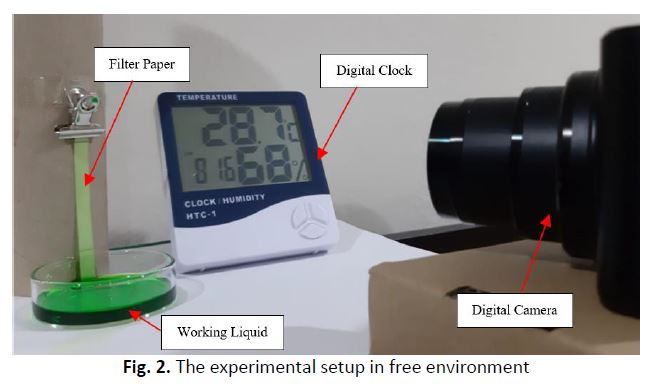Characterization of Fluid Flow through Porous Media
DOI:
https://doi.org/10.37934/arfmts.96.2.2232Keywords:
Mircrofluidics, porous media, capillary flow, Lucas-Washburn equationAbstract
Microfluidic paper-based analytical devices (μPADs) are highly in demand because of their important usage in the field of medical diagnostic, biology and environmental testing. Porous media has been used as a μPADs with the benefits of cost-effective, excellent performance and ease of usage. Recently, porous media from paper-based filter paper has also been used as the main component for a self-powered imbibing micropump actuation. In this study, characterization of porous media from different specifications of Whatman ashless grade W40, W41 and W42 filter papers has been studied. In addition, the wicking or capillary flow capability of the porous media under an open and confined environment was also analyzed. Scanning Electron Microscope (SEM) and ImageJ image processing have been used as the method to determine the filter paper characteristics. Whatman filter paper grade W41 has the highest percentage of porosity which is 70.82 %. The porosity of filter paper grade W40 and W42 are 70.24 % and 61.8 % respectively. Meanwhile, experiments were conducted to understand the water wicking process for Whatman filter paper for different paper shapes and environments. Diamond-shaped filter paper resulted in faster wicking in the free environment compared with the constraint environment. The percentage difference of the wicking under these environments is 61.56 % and 141.09 % for W40 and W41 filter paper respectively. The experiment conducted also confirmed that the wicking behavior of the capillary height of the liquid in filter paper is proportional to the square root of the time. This result agreed well with the Lucas-Washburn equation. In conclusion, the characteristics of the liquid flow in porous media are closely related to its specification as provided by the manufacturer. Furthermore, the decrease of liquid wicking in a confined environment is the result of the high resistance of a liquid to flow with decreased filter paper porosity, permeability and thickness. This study provides important findings that will help in the optimization and best design of self-powered imbibing micropump for microfluidic device development.
Downloads

































